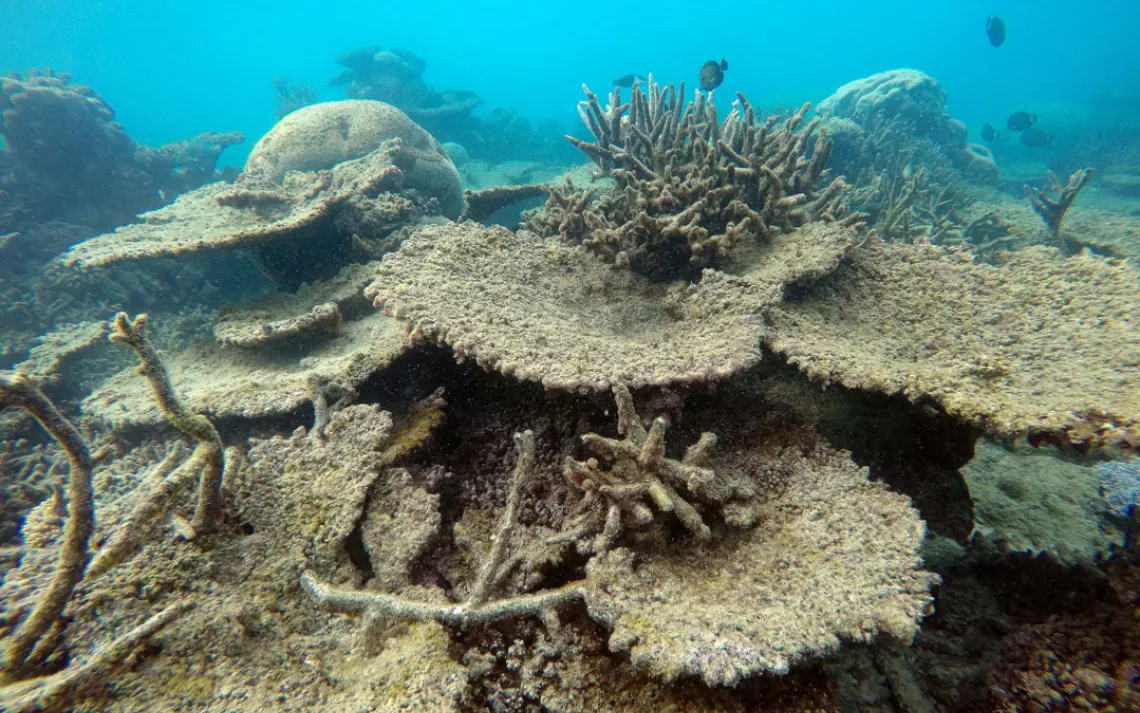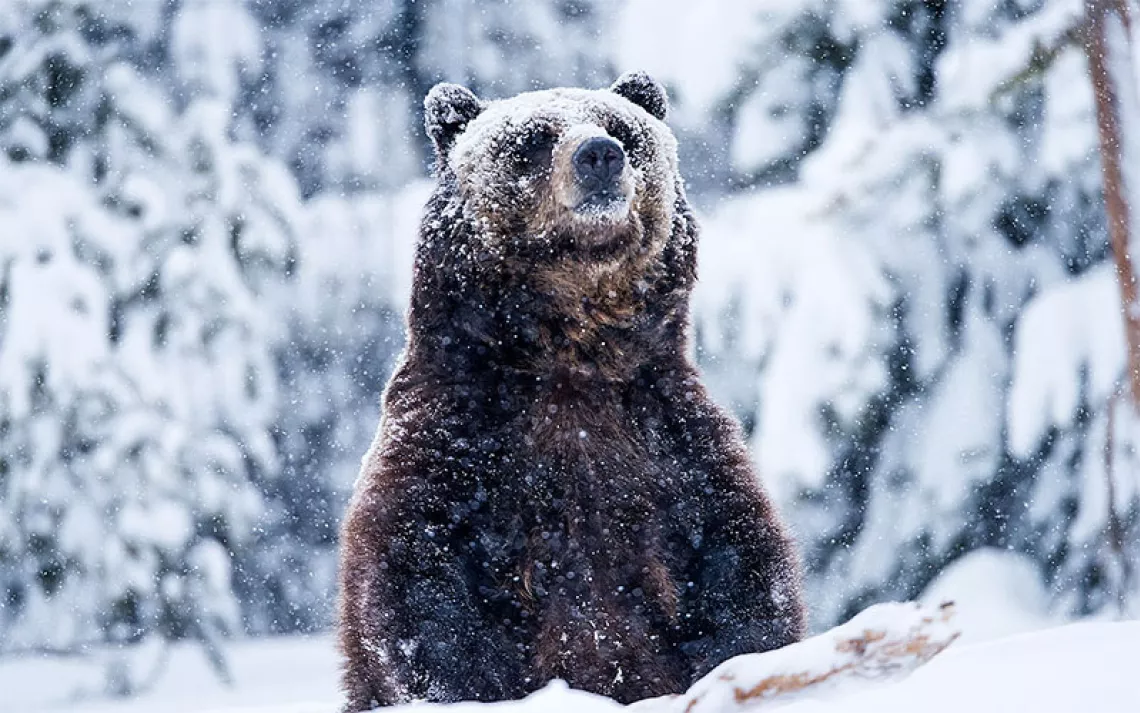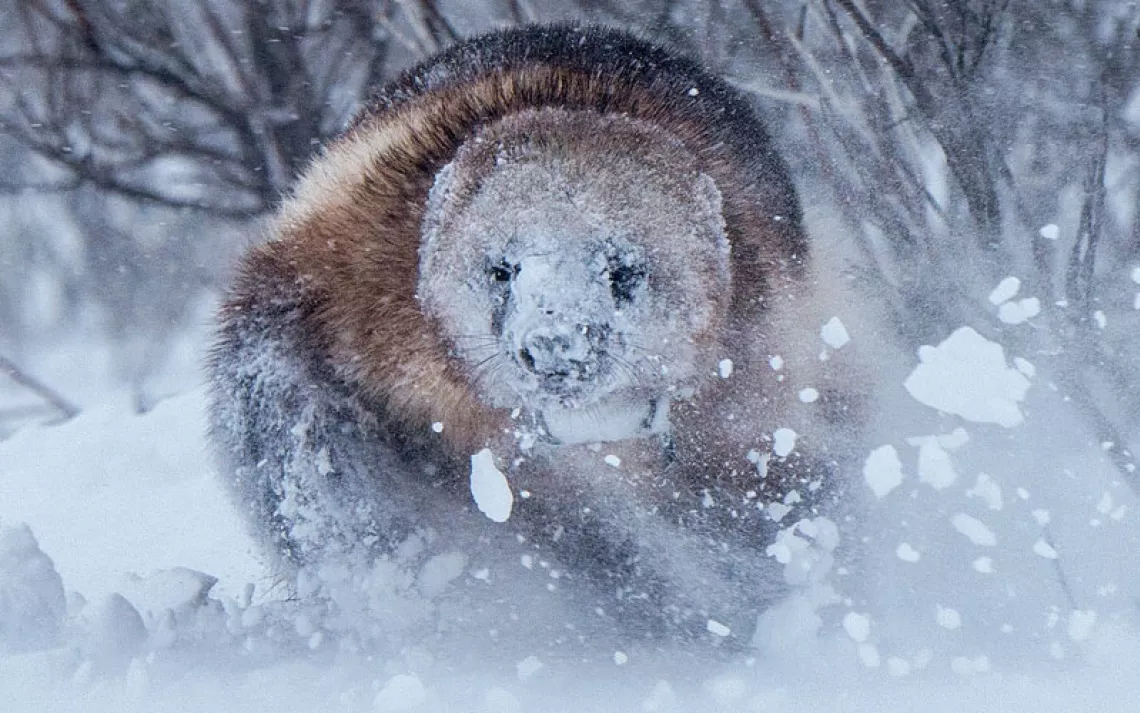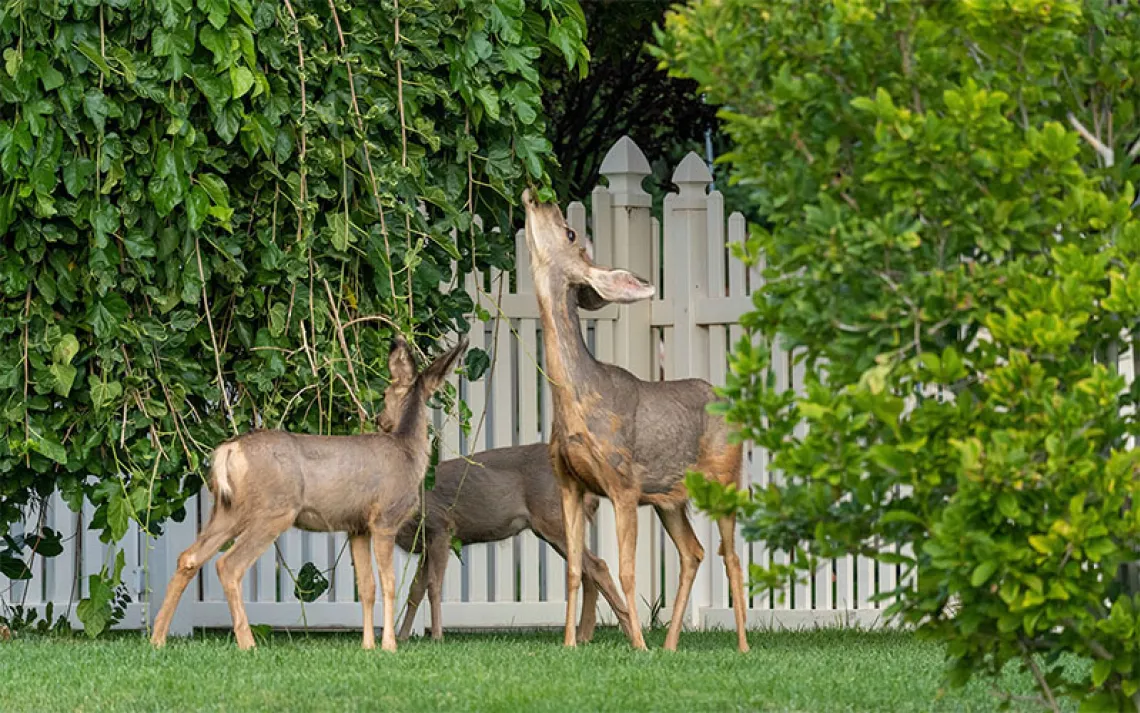The Largest Die-Off of Corals Ever Just Happened on the Great Barrier Reef
Warm temperatures have led to a massive amount of death on the marine treasure

Dead table corals killed by bleaching | Photo by Greg Torda, ARC Centre of Excellence for Coral Reef Studies
The Great Barrier Reef suffered the largest die-off of corals ever recorded, according to a recent report from Australian scientists.
“Most of the losses in 2016 have occurred in the northern, most-pristine part of the Great Barrier Reef,” said Terry Hughes, director of the Australian Research Council (ARC) Centre of Excellence for Coral Reef Studies, in a statement. “This region escaped with minor damage in two earlier bleaching events in 1998 and 2002, but this time around it has been badly affected.”
A 435-mile-long section along the northern part of the 1400-mile-long reef lost 67 percent of its shallow water corals in nine months. The central portion suffered only 6 percent bleaching, and the southern portion suffered only 1 percent bleaching.
The reef isn’t only a massive freak of nature; it’s also an economic force. More than 70,000 people work in jobs that rely on a healthy reef. The natural underwater structure generates $5 billion in income a year. Dive operators affected by the bleaching are speaking out.
“This event has received unprecedented media and social media coverage, which I would suggest has educated and enlightened many to the impacts we are facing from global warming as a result of carbon emissions,” said Craig Stephens, the tourism operations manager of Mike Ball Dive Expeditions. “One would hope this would jar people into voting in governments that are prepared to act and put in place long-term solutions and focus on renewable energies and technology as opposed to burning cheap fossil fuels.”
Corals have a symbiotic relationship with the algae that live within their tissues. The algae produce food for their host via photosynthesis. Corals use that food and the resulting energy it offers to build reefs. When temperatures are too high, the stressed corals release the algae. The corals lose their vibrant colors, which result from the algae, and appear bleached. If temperatures cool again quickly enough, the algae can return to the coral. But if temperatures remain high for a long period of time, the corals die.
While the badly damaged northern section of the Great Barrier Reef experienced hotter than normal temperatures during much of the summer, the southern section was protected by a cyclone that passed over Fiji and then brought the southern coast of Australia rain and cooler weather. Scientists are still analyzing the data to find out how much hotter the northern section was than normal, but both 2015 and 2016 so far have been the warmest years on record. One of the scientists involved with the survey said the lesson of the bleaching is simple: “We need rapid global action on carbon emissions,” said professor Andrew Baird of the ARC Centre of Excellence for Coral Reef Studies.
The scientists surveyed the reefs multiple times during the year. During the peak of bleaching, in March and April, they checked out 911 reefs by helicopter and small plane to look for bleaching. They also dove around roughly 80 reefs to confirm their findings. The group found some level of bleaching on 90 percent of the reefs they surveyed. In October and November, they returned and conducted aerial surveys and roughly 80 dives again to check to see how many reefs had been affected long term. That’s when they found two-thirds of the corals still bleached in the northern section. “On top of that, snails that eat live coral are congregating on the survivors, and the weakened corals are more prone to disease,” said Dr. Andrew Hoey in a statement. “A lot of the survivors are in poor shape.”
Scientists expect that it will take 10 to 15 years for new coral to grow and replace the coral that died off in the northern region—as long as another bleaching event doesn’t occur to further slow the reef’s recovery.
“The Great Barrier Reef undoubtedly still offers world-class diving,” said Stephens, the tourism operations manager. “The unknown, however, is for how long?”
 The Magazine of The Sierra Club
The Magazine of The Sierra Club



